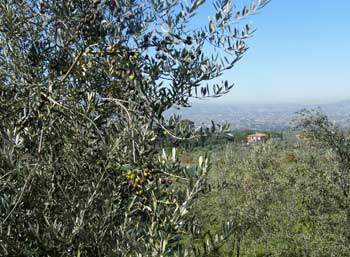 Come to the place where a road divides the rolling hills, gets lost in the forests, and finds itself once again in the traffic of ancient and modern routes, passing through the most beautiful artistic and monumental sites, running along mountains, lakes, rivers and the purest springs, meeting up with people, history and stories, stopping in front of farmhouses, oil mills and restaurants. There’s only one Olive Oil Road, which takes you on a discovery of fantastical surprises and intense emotions up and down Umbria, passing through everything while bringing it together, in the same way there is only one DOP even with its different characteristics that is, for good reason, defined as the region’s green gold for its extraordinary organoleptic characteristics.
Come to the place where a road divides the rolling hills, gets lost in the forests, and finds itself once again in the traffic of ancient and modern routes, passing through the most beautiful artistic and monumental sites, running along mountains, lakes, rivers and the purest springs, meeting up with people, history and stories, stopping in front of farmhouses, oil mills and restaurants. There’s only one Olive Oil Road, which takes you on a discovery of fantastical surprises and intense emotions up and down Umbria, passing through everything while bringing it together, in the same way there is only one DOP even with its different characteristics that is, for good reason, defined as the region’s green gold for its extraordinary organoleptic characteristics.

